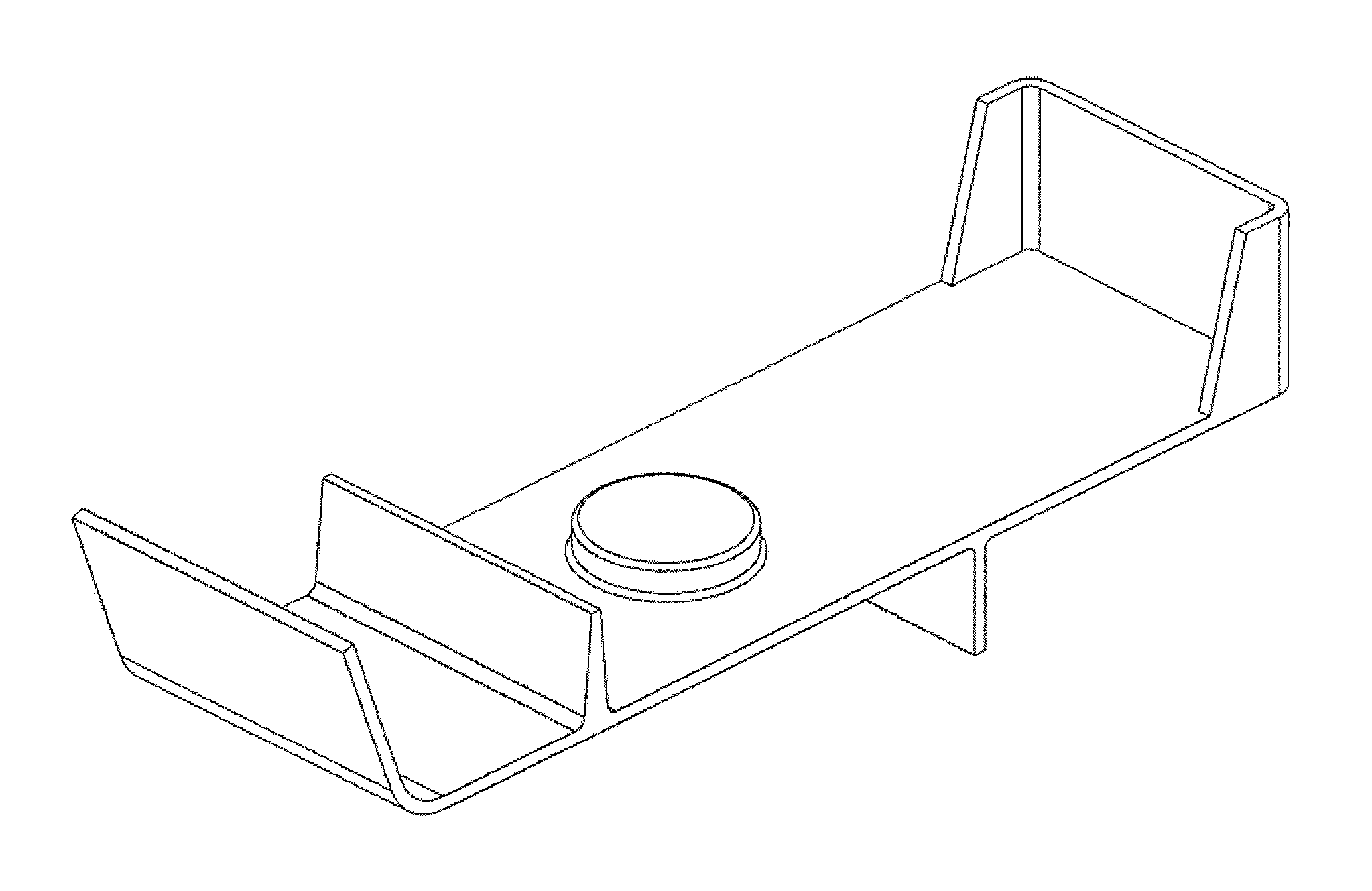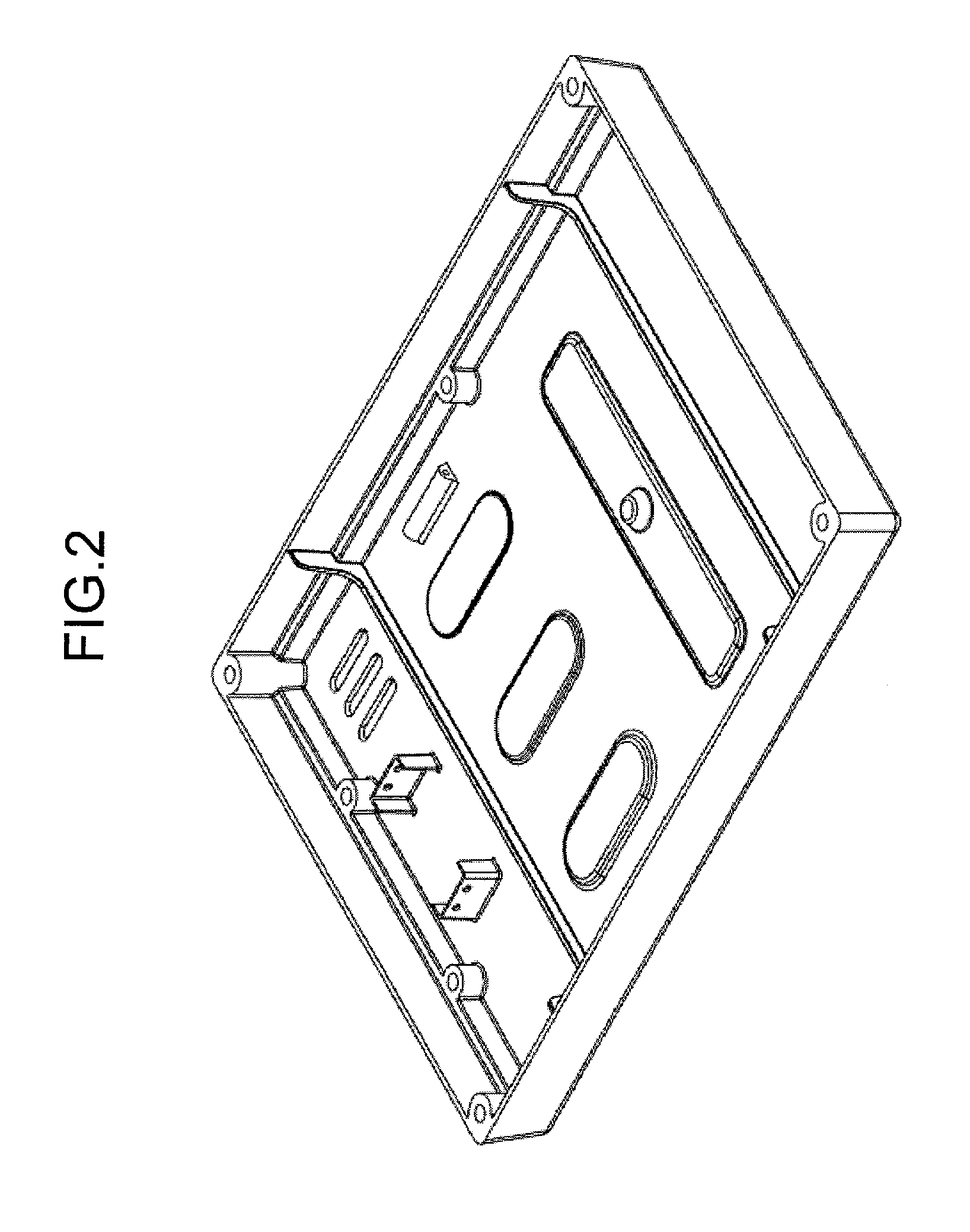Shaped Product Constituted by Fiber-Reinforced Composite Material
a composite material and fiber-reinforced technology, applied in the direction of ceramic layered products, instruments, transportation and packaging, etc., can solve the problems of poor corrosion resistance, limited in, formability, etc., and achieve excellent surface appearance, high rigidity, and high productivity
- Summary
- Abstract
- Description
- Claims
- Application Information
AI Technical Summary
Benefits of technology
Problems solved by technology
Method used
Image
Examples
reference example 1
[0106]Carbon fibers (carbon fiber TENAX (registered trademark) STS40-24KS (fiber diameter: 7 μm, tensile strength: 4,000 MPa), manufactured by Toho Tenax Co., Ltd.) were cut into a length of 20 mm while opening, and were introduced in a taper tube in a feed rate of 300 g / min. Air was blown to the carbon fibers in the taper tube to partially open the fiber bundle, and the carbon fibers were sprayed on a table provided at a lower part of a taper tube outlet. PA66 fibers (T5 Nylon, 1400 dtex, manufactured by Asahi Kasei Fibers Corporation) dry cut in 2 mm were supplied as a matrix resin to the taper tube in a rate of 500 g / min, and sprayed simultaneously with the carbon fibers. Thus, a random mat having a thickness of about 4 mm in which the carbon fibers having an average fiber length of 20 mm and PA66 were mixed was obtained. The form of the reinforcing fibers in the random mat was observed. As a result, a fiber axis of the reinforcing fibers is nearly parallel to a plane, and the re...
reference example 2
[0109]Carbon fibers (carbon fiber TENAX (registered trademark) IMS60-12K (average fiber diameter: 5 μm, fiber width: 6 mm), manufactured by Toho Tenax Co., Ltd.) were cut into a length of 30 mm, and were introduced in a taper tube in a feed rate of 1,000 g / min. Air was blown to the carbon fibers in the taper tube to partially open the fiber bundle, and the carbon fibers were sprayed on a table provided at a lower part of a taper tube outlet. PC resin (PANLITE (registered trademark) L-1225L, manufactured by Teijin Chemicals Ltd.) freeze-pulverized into an average particle diameter of about 1 mm were supplied as a matrix resin to the taper tube in a rate of 3,000 g / min, and sprayed simultaneously with the carbon fibers. Thus, a random mat having a thickness of about 10 mm in which the carbon fibers having an average fiber length of 30 mm and PC were mixed was obtained. The form of the reinforcing fibers in the random mat was observed. As a result, a fiber axis of the reinforcing fiber...
reference example 3
[0111]Glass fibers (EX-2500 (average fiber diameter: 15 μm, fiber width: 9 mm), manufactured by Asahi Glass Co., Ltd.) were cut into a length of 50 mm, and were introduced in a taper tube in a feed rate of 1,200 g / min. Air was blown to the carbon fibers in the taper tube to partially open the fiber bundle, and the carbon fibers were sprayed on a table provided at a lower part of a taper tube outlet. PA66 fibers (T5 Nylon, 1400 dtex, manufactured by Asahi Kasei Fibers Corporation) dry cut in 2 mm were supplied as a matrix resin to the taper tube in a rate of 1,300 g / min, and sprayed simultaneously with the carbon fibers. Thus, a random mat having a thickness of about 6 mm in which the carbon fibers having an average fiber length of 50 mm and PA66 were mixed was obtained. The form of the reinforcing fibers in the random mat was observed. As a result, a fiber axis of the reinforcing fibers is nearly parallel to a plane, and the reinforcing fibers were randomly spread in a plane. The av...
PUM
| Property | Measurement | Unit |
|---|---|---|
| length | aaaaa | aaaaa |
| diameter | aaaaa | aaaaa |
| charge rate | aaaaa | aaaaa |
Abstract
Description
Claims
Application Information
 Login to View More
Login to View More - R&D
- Intellectual Property
- Life Sciences
- Materials
- Tech Scout
- Unparalleled Data Quality
- Higher Quality Content
- 60% Fewer Hallucinations
Browse by: Latest US Patents, China's latest patents, Technical Efficacy Thesaurus, Application Domain, Technology Topic, Popular Technical Reports.
© 2025 PatSnap. All rights reserved.Legal|Privacy policy|Modern Slavery Act Transparency Statement|Sitemap|About US| Contact US: help@patsnap.com



